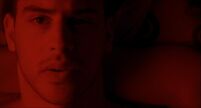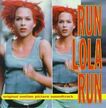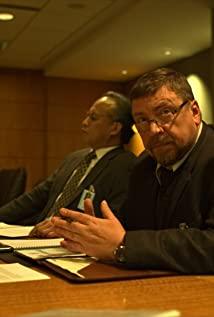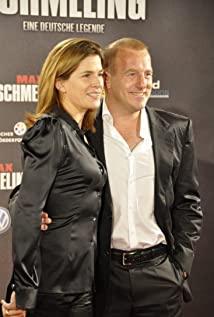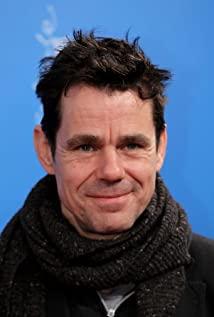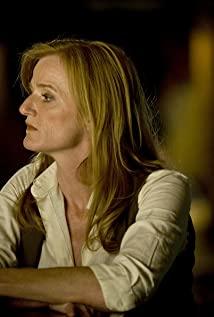I have seen Lola Run once or twice before, but I didn't understand it at first. I thought the plot was quite ordinary. Later, I learned that this is a classic example film using montage techniques and found that this film is also very interesting. There is content, so I plan to write it myself. Lola Run has used many kinds of montages, and I will write the first time and space. At the beginning of the film, the swinging clock alternately sways the text at the beginning, and the background sounds the ticking of the stopwatch movement, indicating that time is running. Then, the camera kept zooming in to the mouth decorated by the monster on the clock, and instantly switched from the darkness to the crowd of people coming and going. The background music sounded, and the fast-paced rhythm matched the fast-moving crowd, which also made the space narrative. The pace quickened. At this time, a narration "Human, who are we, where do we come from..." sounded in the film. Here, the narration is used to cause the audience to think and associate. After showing several characters in the film, the camera finally landed on the bank security guard. After the security guard spoke his lines, he said the game started. He picked up the football and kicked the ball into the air. The title of Lola Run. Then the football fell quickly, and the screen switched to another scene, an animated time-space tunnel. Here, a montage of scene transitions was used. After the animation was over, the camera was switched to the actual screen of the film again, falling from a high speed at a high speed to Lola's apartment. From animation to this is the same transition cut montage.
Then the film uses a cross-cut montage, the red phone rings loudly, Lola picks up her boyfriend's phone, and then the camera quickly cuts from Lola's room to the downtown street outside. Lola's boyfriend Manny is in the phone booth on the street. The quick crossover showed Lola's anxiety about picking up her boyfriend's phone call at first. At the same time, Lola and Manny were talking on the phone in different places, and the screens quickly switched to their respective conversations. Here is the use of cross-cut montage. Next, reverse splicing montage was used. During the phone conversation, Manny asked Lola why she didn’t go to the appointed place. Lola began to explain the reason. The camera quickly switched to black and white to speed up the progress of the camera and showed Lola who was late after losing the car. The order of time is broken, and the color contrast between the black and white picture and the present time also shows that it is a different time, and it is a flashback of the past time. Later, Manny explained that there was a loss of money, and also used the same reverse flashback editing, with a quick and simple black and white plot, which not only explained the reason for the incident, but also saved the narrative time, following the fast rhythm of the film. Here, the narration of Lola and Manny also uses a montage of voices, briefly explaining what happened in the form of oral narration in another picture in black and white. Then, knowing the importance of losing the money, the camera goes back to the present time, and the scene where Lola and Manny repeat the money bag are crossed and replaced again faster, again showing the seriousness of the matter and strengthening the sense of urgency of the plot. Then, in the following paragraph, Manny made a mental assumption about the money being picked up by a homeless man, and used a montage of psychological editing. The film was played with multiple freeze-frame pictures: Hawaii, Florida, gang boss, etc. One by one, it quickly jumped and played, interspersed in Manny. In Ni's words, Manny's psychological imagination is strongly expressed.
Then the film uses an artistic metaphor montage, that is, when Manny is chattering, Lola can't help screaming, the surrounding glass is shattered, and the camera is given to the stationary puppet and the slow tortoise, creating a slow stillness The effect of the camera lens contrasts with the screaming of Lola in front, and temporarily slows down the fast rhythm of the film, which is a metaphor for Lola's dissatisfaction with Manny's unease, and also shows that Lola calmed down and began to save the crisis. Then, the film uses a cross-cut montage to switch back and forth between Manny and Lola's dialogue, explaining the remaining 20 minutes to prepare the money, creating suspense for the development of the subsequent plot. Then, the phone hangs up, and the film uses an intellectual montage of cuts: after Lola hangs up, the screen receives the falling dominoes on the TV, as well as the walking clock on the wall, and then cuts to the slow motion shot of Lola Throwing away red telephone handset. Through the collision between these different pictures: the dominoes represent the fast passing time, the clock represents the 20-minute countdown, and the red microphone represents the urgency of time and Lola's anxious mood. These pictures seem to have nothing to do with the plot. The shot is the director's use of an intellectual montage, implying that Lola is about to find a solution in a tight 20-minute time frame. Immediately after, the microphone fell, and Lola began to think about who to ask for help. Then the director used psychological montage editing again. Under the sequence of shots in which Lola was standing and thinking, she quickly interspersed multiple images of the characters that appeared in Lola's life. The characters are interspersed and flashed intermittently, which is used to express Lola's quick thinking and memories. In the end, after the flashing picture, it was fixed on the scene of Lola's father, indicating that Lola finally planned to go to her father to help raise money. Lola then heads out to find Dad, and the film again reuses a montage of transition scenes. The camera is pushed to Lola's mother in the room, and then to the TV screen next to her, which is playing the special Lola running animation at the beginning. The camera enters the animation, and the animation Lola starts to run. The animation here replaces the picture of Lola running down the stairs in reality, and begins to prepare for the transition and editing of the scene. Finally, in the animation, Lola opened the door of the apartment, and the camera screen changed to a real picture. Lola ran out of the apartment, and the scene was transferred. At this time, the fast-paced background music sounded again, suggesting that the rhythm of the plot accelerated again, and Lola's sense of urgency appeared. Then, there is Lola running on the street. The pictures of some places are connected by quick splicing, omitting the picture of Lola running in detail all the time, indicating that Lola has been running through many places. Then, Lola collided with the old woman pushing the baby carriage while running, and the director used a quick freeze-frame jump to switch what would happen in the future after the old woman: stealing the child was found and stealing the child again. The director used this kind of fast-moving cut-and-shoot transition of freeze-frame images, on the one hand to express that time is fast, saving time for specific presentations, and on the other hand to use freeze-frame photos to show the plasticity of time and space. Then, the camera turns back to several scenes of Lola running on the street again. Then, the background music suddenly stopped, and the picture suddenly switched to another different scene: the scene where Lola's father's lover and Lola's father were talking in the office. Here the director used a parallel editing montage, and the previous plot line of Lola's nervous running was with Lola's father's office. The plot lines are juxtaposed and spliced together, different scenes and plots that take place at the same time in different spaces and are initially unrelated. In this plot, the picture uses a slightly darker tone, and the camera is shaken to shoot, implying the tension and lowness of the relationship between the characters in the plot and the psychological shake of the characters. After the office episode is over, the camera cuts back to the street, and a long shot takes Lola running, and the background music plays a fast rhythm again. Then, Lola met the boy who stole the car. After Lola refused the boy's car to sell, the director repeated the same jump cut of the old woman's freeze-frame picture to show the boy's future scenes: he was beaten for stealing the car, the hospital fell in love with the nurse, Marry a nurse. After that, the camera turned back to Lola running again, passing by the car that had just left the parking lot, and the car collided with the white car driving behind. Then, at the same time, the camera parallel received the plot line of Manny in the phone booth. After Manny gave up the phone for help, the clock on the supermarket building appeared in the shot, which was a reminder of the countdown. Then again, the parallel montage cuts to the office plot line, where the lover tells Lola's dad that she's pregnant. After the end, the camera returned to Lola, came to the bank, and hit the woman working in the bank outside the office corridor. Once again, the stop-motion picture was used to jump and edit to show what happened to the woman in the future: a car accident, disability, depression and suicide. Then, Lola failed to borrow money from her father. She went out to the street and asked the old lady the time. The old lady took out her watch. At this time, it was a reminder sign of another time, and the fast music sounded again. Lola was about to run to the supermarket, and a red ambulance next to it braked suddenly and almost hit the glass. The red ambulance here is a metaphor for the urgency of time, and the emergency brake means that Lola almost caught up with Manny. In the back, the camera showed Manny, standing in front of the supermarket, ready to rob. At this time, the shot from Lola's other end was connected again, and cross-cutting was used. Then, the picture rhythm noticeably picks up over time. At this time, the director used a montage of front and back shots. At this time, the middle of the picture was separated by a central axis, and the left and right were divided into Manny's plot and Lola's plot, and the two different spaces on the left and right were separated to show the audience. In this way, the picture is divided into two moving pictures, creating an alternative spatial presentation method. Manny in the left picture is about to enter the supermarket to rob, and Lola in the right picture tries his best to catch up, creating a kind of suffocation in time and space. The sense of urgency and excitement, such front and back editing is also one of the applications of film montage. Then, Lola can't catch up, and the camera cuts to Manny entering the supermarket and starting the robbery. Then, the film uses a cross-cut montage again, and at the same time, the scene of Manny robbery and the scene of Lola running outside are alternately switched, and the rapid music adds to the tension in the subsequent development of the plot. Similarly, the cross-splicing of Manny Lola here also shows the causal connection between the two at this time: Lola did not arrive in time, causing Manny to enter the supermarket to rob. In the end, Lola came to the supermarket and finally completed the docking with Manny in space. Next, the film again gave the two of them a front and back cut, but this time there was no central axis to separate them into two pictures: Manny took money at the supermarket checkout, while he received Lola who was in the wind. In the end, the two ran out of the supermarket after getting the money, and the two ran on the street. The camera swayed greatly while running towards the two, creating a sense of movement that followed the two of them. In the end, Lola is shot and falls to the ground, the camera is pushed from Lola's face to Lola's eyes close-up, then the tone gradually changes to red, and the scene cuts to Manny and Lola lying naked on the bed, the transformation and editing here is using art A montage of effects, the bloody red splicing is a metaphor for Lola's gradual death, recalling a conversation with Manny before dying. After the dialogue is over, use the red conversion lens again to return to Lola's reality. Lola doesn't want to die and wants to start again. Then, the film begins to enter the second time-space in a time-reversed manner. The director uses an artistic montage here. Now the red plastic bag falling in the air and the red microphone that fell in the room of Lola at the beginning of the story start to switch quickly to connect, indicating that Time starts to run backwards. In the end, the camera was directly connected to the red microphone and dropped, and the picture returned to the scene where Lola was in the room at the beginning. The time and space reversal was completed, and Lola ran again. In the end, Lola is shot and falls to the ground, the camera is pushed from Lola's face to Lola's eyes close-up, then the tone gradually changes to red, and the scene cuts to Manny and Lola lying naked on the bed, the transformation and editing here is using art A montage of effects, the bloody red splicing is a metaphor for Lola's gradual death, recalling a conversation with Manny before dying. After the dialogue is over, use the red conversion lens again to return to Lola's reality. Lola doesn't want to die and wants to start again. Then, the film begins to enter the second time-space in a time-reversed manner. The director uses an artistic montage here. Now the red plastic bag falling in the air and the red microphone that fell in the room of Lola at the beginning of the story start to switch quickly to connect, indicating that Time starts to run backwards. In the end, the camera was directly connected to the red microphone and dropped, and the picture returned to the scene where Lola was in the room at the beginning. The time and space reversal was completed, and Lola ran again. In the end, Lola is shot and falls to the ground, the camera is pushed from Lola's face to Lola's eyes close-up, then the tone gradually changes to red, and the scene cuts to Manny and Lola lying naked on the bed, the transformation and editing here is using art A montage of effects, the bloody red splicing is a metaphor for Lola's gradual death, recalling a conversation with Manny before dying. After the dialogue is over, use the red conversion lens again to return to Lola's reality. Lola doesn't want to die and wants to start again. Then, the film begins to enter the second time-space in a time-reversed manner. The director uses an artistic montage here. Now the red plastic bag falling in the air and the red microphone that fell in the room of Lola at the beginning of the story start to switch quickly to connect, indicating that Time starts to run backwards. In the end, the camera was directly connected to the red microphone and dropped, and the picture returned to the scene where Lola was in the room at the beginning. The time and space reversal was completed, and Lola ran again. In the end, Lola is shot and falls to the ground, the camera is pushed from Lola's face to Lola's eyes close-up, then the tone gradually changes to red, and the scene cuts to Manny and Lola lying naked on the bed, the transformation and editing here is using art A montage of effects, the bloody red splicing is a metaphor for Lola's gradual death, recalling a conversation with Manny before dying. After the dialogue is over, use the red conversion lens again to return to Lola's reality. Lola doesn't want to die and wants to start again. Then, the film begins to enter the second time-space in a time-reversed manner. The director uses an artistic montage here. Now the red plastic bag falling in the air and the red microphone that fell in the room of Lola at the beginning of the story start to switch quickly to connect, indicating that Time starts to run backwards. In the end, the camera was directly connected to the red microphone and dropped, and the picture returned to the scene where Lola was in the room at the beginning. The time and space reversal was completed, and Lola ran again. In the end, Lola is shot and falls to the ground, the camera is pushed from Lola's face to Lola's eyes close-up, then the tone gradually changes to red, and the scene cuts to Manny and Lola lying naked on the bed, the transformation and editing here is using art A montage of effects, the bloody red splicing is a metaphor for Lola's gradual death, recalling a conversation with Manny before dying. After the dialogue is over, use the red conversion lens again to return to Lola's reality. Lola doesn't want to die and wants to start again. Then, the film begins to enter the second time-space in a time-reversed manner. The director uses an artistic montage here. Now the red plastic bag falling in the air and the red microphone that fell in the room of Lola at the beginning of the story start to switch quickly to connect, indicating that Time starts to run backwards. In the end, the camera was directly connected to the red microphone and dropped, and the picture returned to the scene where Lola was in the room at the beginning. The time and space reversal was completed, and Lola ran again.
Sometimes, life may be like this, a different action will cause the future to be different just because of that. The writing is cumbersome, and there may be errors or deficiencies. Corrections and additions are welcome.
View more about Run Lola Run reviews



